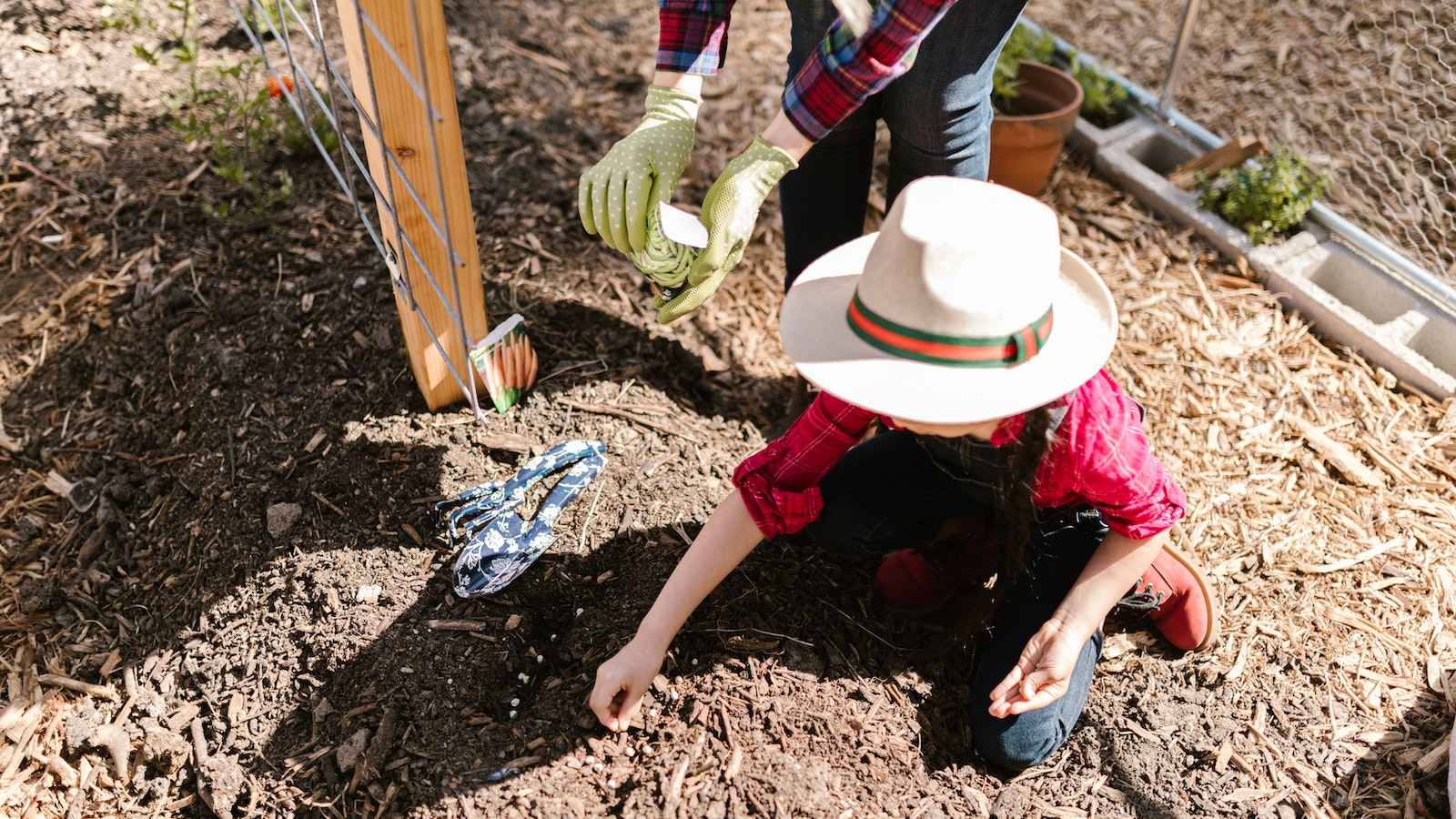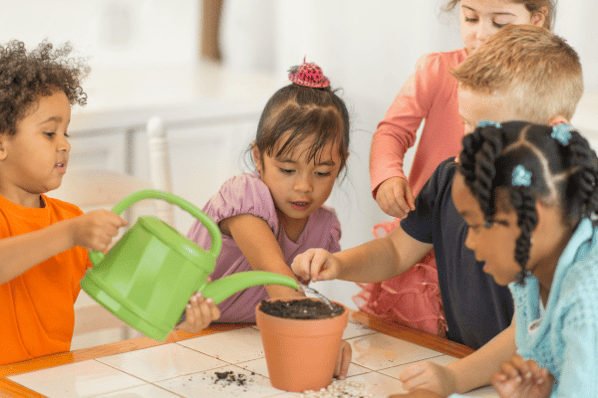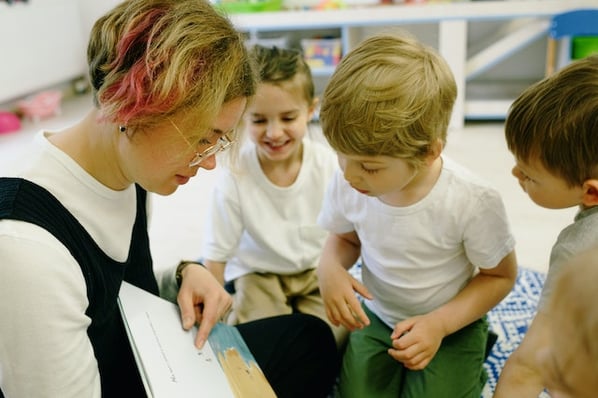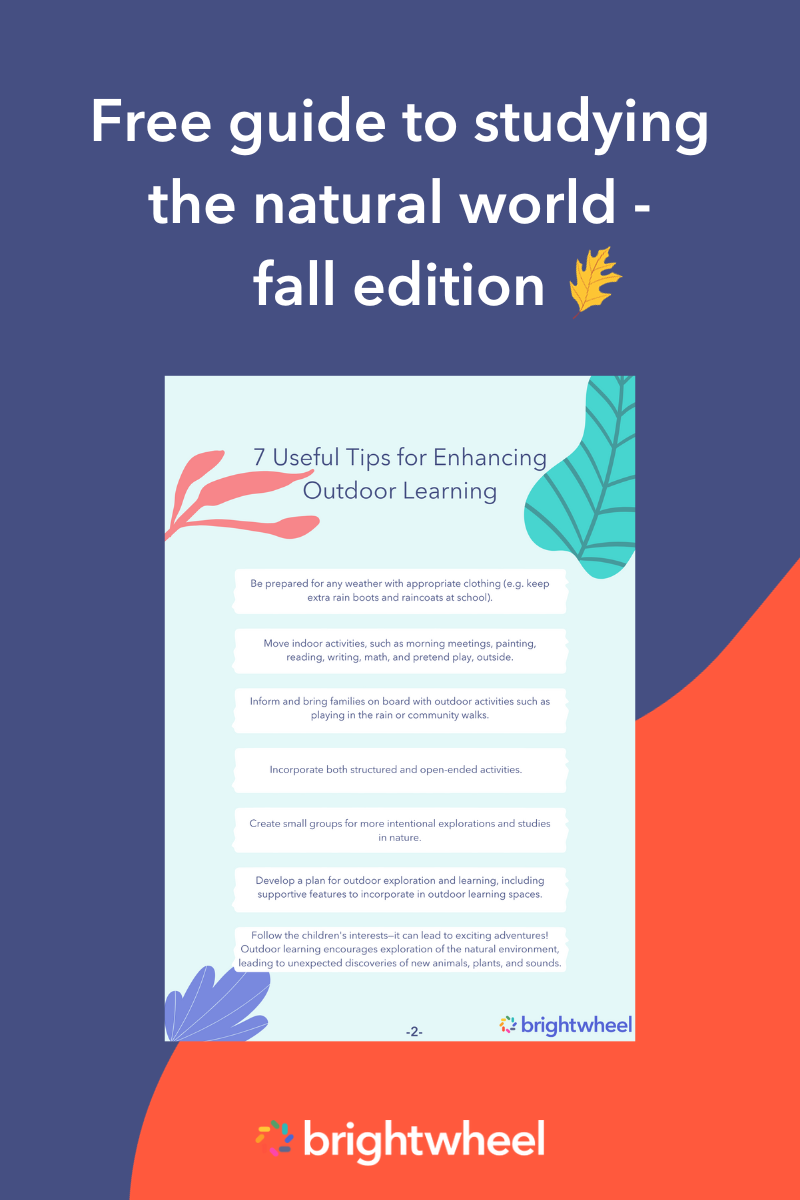
Caring for plants is one of the most fascinating ways to teach preschoolers about the natural world. By exposing them to simple activities, you teach them about our planet and help them develop an appreciation for nature. Planting activities also help children develop key fine motor, cognitive, and social-emotional skills.
This article explores educational plant activities for preschool that can introduce your class to the world of plants and get them outside.
-jpg.jpeg?width=598&height=399&name=pexels-rodnae-productions-7782192%20(1)-jpg.jpeg)
What are the benefits of planting activities for preschoolers?
Garden and planting activities can teach your preschoolers important concepts about the natural world around them and help them develop key skills. Below we dive into some of the key benefits:
Enhances cognitive and fine motor development
The process of planting, watering, and harvesting helps to nurture and develop coordination and strength in children’s hands and fingers. Children learn about textures, shapes, and sizes by touching and exploring plants. This tactile experience helps to develop their motor skills. The act of planting also has cognitive benefits. It helps them to develop problem-solving and planning skills as they consider the best way to care for our plants.
Promotes social-emotional development
When children engage in activities like planting seeds, caring for a plant, and observing the plant grow, they learn important skills like cooperation, empathy, and responsibility. As a classroom works together to plant and care for a garden, children learn to communicate and work together collaboratively. These social-emotional skills are important for children to learn in order to be successful in school.
Introduces children to the world of science
Plants are a great way to introduce children to the world of science. You can talk about the life cycle of plants, what plants need to grow, and how plants help us in our everyday lives. Engaging in these activities with children helps them develop a love for learning and discovery.
Encourages a healthy lifestyle
Gardening and planting activities give teachers the chance to teach children about the importance of nutrition and eating a variety of fruits and vegetables. They can teach children where food comes from, how to grow their own food, and the importance of eating a balanced diet. As a result, they develop a greater appreciation for healthy foods.
Enhances children’s creativity
When it comes to creativity, plants are a great starting point because they have so much variety. You can use various plants to deepen children’s observations by discussing the textures, shapes, and colors of plants in ways that go beyond "this is green'' or "this is blue." You can talk about whether the texture of a leaf is smooth or bumpy, for example.
In addition, children could create collages, pattern designs, or pictures using leaves and flowers, which encourages them to experiment and think outside the box. All these skills help foster a creative approach to problem-solving and thinking, which can benefit all areas of their development.
May reduce stress
A recent study found that activities involving plants help to reduce children's stress levels. The study found that children who participated in activities like planting and caring for plants showed lower stress levels than they did before participating in any planting activity.
Moreover, gardening is therapeutic and provides an opportunity to get outside in the fresh air, further reducing stress levels. Plant activities often also involve physical skills such as digging or shoveling soil, exposing children to the mental health benefits of physical activity.
Teaches responsibility, hard work, and patience
By taking care of a garden, children learn the importance of responsibility and hard work by seeing how their efforts result in healthy plants. They also learn to be patient while waiting for their plants to grow.
Fosters a love for nature
When children learn about planting and gardening, they develop a relationship with nature. This ultimately helps them appreciate the natural world and all the creatures and plants that live in it. This appreciation can extend beyond the classroom and into their everyday lives. As they grow older, they may start to garden or take up other hobbies that involve nature.
Planting activities for preschoolers
Here are some ideas for plant-themed activities that your preschoolers will love:
Plant a seed
To promote children's sensory development, help them plant and water a seed. This activity also helps develop children's motor skills and strengthens their hand-eye coordination. Once the seeds start to sprout, watch them grow together and talk about how plants need water and sunlight to thrive. This is a great way to bond with the children and teach them about the wonders of nature.

Make leaf rubbings
Here is a simple step-by-step process to help you make leaf rubbings with your children:
- Collect leaves from trees and shrubs. Choose leaves with different shapes and textures.
- Place the leaf on a flat surface.
- Cover the leaf with a piece of lightweight paper.
- Rub a crayon or pencil over the leaf using light pressure.
- Continue rubbing over the entire leaf.
- Remove the leaf from underneath the paper.
The final product will be a beautiful piece of art and an exciting science lesson for your children to enjoy in the classroom. By doing a leaf rubbing, your children will be able to see the different veins in the leaves and how they are arranged.
Go for a nature walk
Explore your neighborhood, community garden, or local park with your children and see how many different types of plants you can spot. Can you find flowers, trees, bushes, and grasses? See if you can identify them by their leaves or flowers. This is also a great opportunity to discuss the importance of caring for our community green spaces.
Assemble nature collages
To make a nature collage, you’ll need different leaves, flowers, seeds, sticks, and other natural materials. Once you have your materials, arrange them on a piece of paper or canvas and glue or tape them to create a beautiful design. Experiment with different arrangements and patterns. Nature collages make beautiful and unique pieces of artwork and are a fun way for children to connect with nature.
Design a play dough flower garden
Playing with play dough is a great way to develop children’s fine motor skills and also encourage them to use their imaginations and be creative. And what could be more fun than designing your own play dough flower garden? First, create a base for your garden using play dough and arrange fresh cut flowers in the dough by poking the stems into the play dough. Allow children to get creative choosing and arranging their flowers.
Count the petals on a flower
Help children practice their counting skills by counting the petals on a flower or the trees in the yard. If the weather is favorable, take your children out in the garden or bring plants and flowers into the classroom. The garden theme can also be used to practice other early math skills. Have your children compare the sizes of different plants or flowers in the garden or use a ruler to measure the height of plants or vegetables.
Read books about plants
There are so many children's books that can be read during circle time to teach about planting and gardening. Some of these books include:
- The Ugly Vegetables by Grace Lin
- Lola Plant a Garden by Anna McQuinn
- Planting a Rainbow by Lois Ehlert
- A Seed Grows by Antionette Portis
- A Seed is Sleepy by Dianna Hutts Aston
These colorful picture books are perfect for teaching children about different types of plants and how they grow.

Sing songs about plants
Singing songs is a powerful way to teach children about growing plants and flowers in an engaging and meaningful way. Songs are fun, easy to remember, and can offer a great science lesson in a matter of minutes. Here’s one song to introduce to the children during circle time to get you started.
Create seed art
Seed art is a fun and easy way for children to create beautiful works of art. All you need are seeds and glue. Here's how to create seed art:
- Collect your materials. You'll need seeds of different sizes and colors, glue, and a piece of paper or cardboard.
- Decide on a design. You can create any design, from a simple sunflower to a complicated scene.
- Glue the seeds in place. Start with the largest seeds and work your way to the smallest.
- Let the glue dry and display your seed art.
FAQs about plant activities for preschool
Here are the answers to some common questions about plant activities for preschool:
Why is it important for preschoolers to learn about plants?
Teaching preschoolers about plants is important for several reasons. For one, plants are a major food source for humans and other animals. By learning about plants, preschoolers understand how the food they eat grows. Additionally, plants play a vital role in the environment, providing oxygen and absorbing carbon dioxide. As such, preschoolers develop a greater appreciation for the natural world and the importance of preserving it.
What kind of plants would be best for teaching about plants to preschoolers?
Succulents can be an simple plant to start with as they are easy to care for and can thrive almost anywhere. They’re also a great size for small hands to handle. Another type of plant that would be great for preschoolers is a Venus flytrap. Venus flytraps are fun to watch and teach children about carnivorous plants. Sunflowers, radishes, and beans are also easy to grow from seeds.
When is the best time to teach children about plants?
You can incorporate a planting preschool theme either in summertime or spring, as long as the weather is warm enough to go outside. Ultimately, it’s up to you to decide when to introduce this topic. However, starting early in the year, during the springtime, might be a good idea so that children can plant their gardens and watch their plants grow throughout the season.
How can I make planting fun for preschoolers?
Use bright and colorful materials that will capture children’s attention. Use hands-on activities that will allow them to get involved and learn through experience. Finally, keep these activities short, simple, and age-appropriate. By making the activities relevant to their interests, they’ll be more engaged and excited to learn about the science of plants.
How can I engage families with a plant preschool theme?
There are plenty of opportunities to engage families with what children are learning in the classroom about plants. Families can help their child collect leaves or flowers to use in class activities or they can help their child water and care for a seed they planted in class and watch it grow together. In addition, you can invite families to participate in a scavenger hunt or nature walk with the class.
Final thoughts
Preschool plant activities positively impact children's development, offering valuable opportunities for children to explore, discover, and learn. These activities not only enhance their understanding of the natural world but also promote important cognitive, physical, and social-emotional development. From planting seeds and observing growth to caring for plants and witnessing the wonders of nature firsthand, preschoolers can develop a deep appreciation for the environment and cultivate lifelong skills.
Brightwheel is the complete solution for early education providers, enabling you to streamline your center’s operations and build a stand-out reputation. Brightwheel connects the most critical aspects of running your center—including sign in and out, parent communications, tuition billing, and licensing and compliance—in one easy-to-use tool, along with providing best-in-class customer support and coaching. Brightwheel is trusted by thousands of early education centers and millions of parents. Learn more at mybrightwheel.com.


